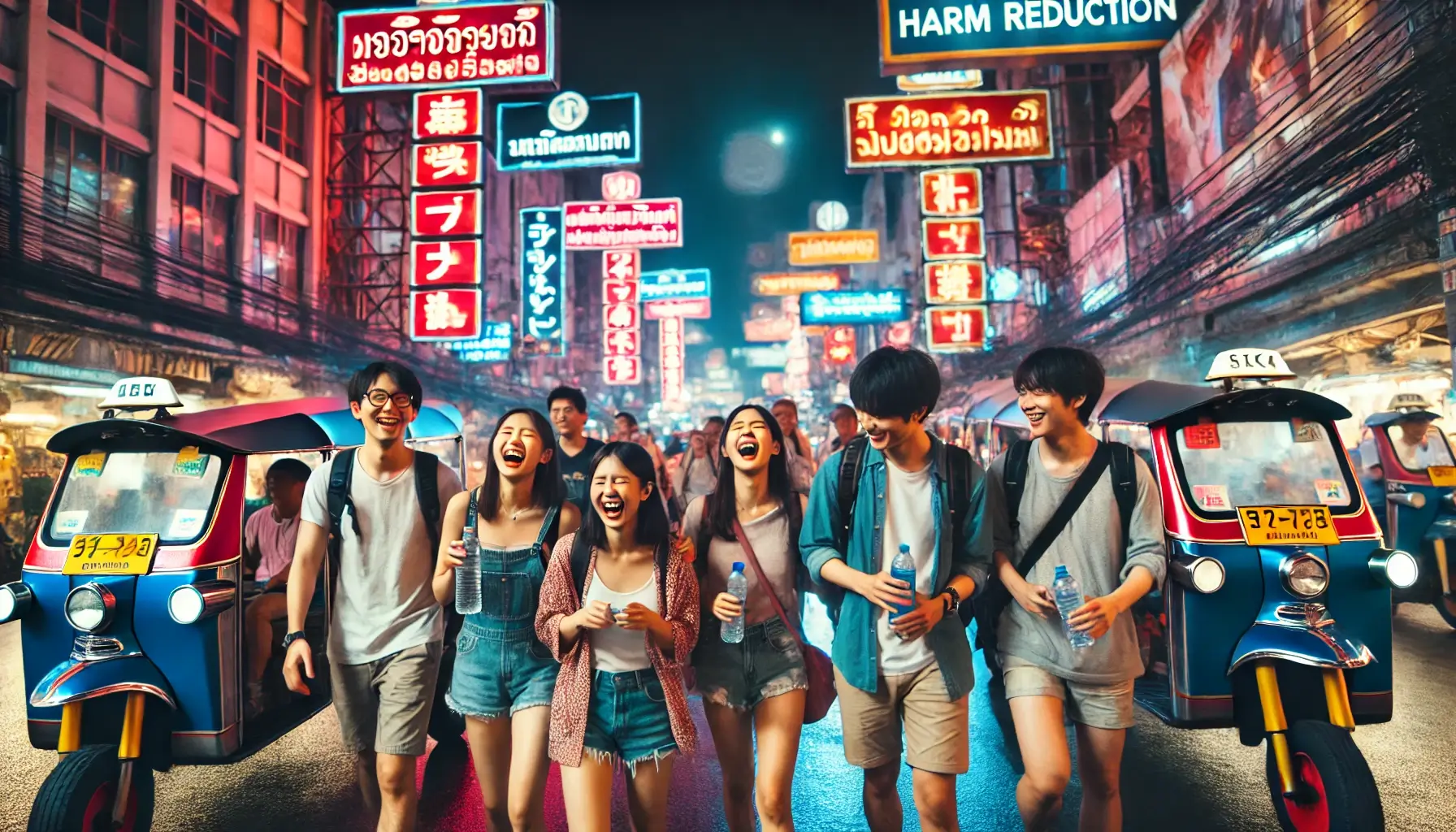The neon-lit districts of Bangkok’s nightlife can captivate Japanese visitors with an array of global beats, rooftop bars, and late-night camaraderie that differs markedly from familiar routines at home. Yet, amid this vibrant exterior lies an unsettling challenge: the substance sold as MDMA may, in fact, be contaminated with PMA or PMMA—hazardous chemicals more toxic and slower to take effect than authentic MDMA. This misrepresentation, widely cautioned against in international harm reduction research, can lead to severe health crises if travelers remain unaware.
Research from sources like Addiction Research & Theory, a peer-reviewed journal examining data-driven insights into drug use patterns, highlights that PMA/PMMA-related incidents surge where no reliable verification measures exist. Similarly, analytical frameworks from RAND Europe’s drug policy research suggest that user-level interventions and testing significantly reduce overdose risks by identifying dangerous adulterants.
For Japanese travelers—accustomed to meticulous checks, quality assurance, and thoughtful preparation—implementing straightforward harm reduction steps can transform uncertainty into manageable caution. The following five essential steps offer a structured approach, blending scientific reasoning with practical measures to ensure that, should one consider experimenting despite well-documented risks, they do so informed and protected.
1. Verify the Substance with the PMA/PMMA Test Kit
No measure stands more crucial than identifying what you are actually dealing with before proceeding. 快乐测试店 provides a specialized MDMA Substances Identification Test for PMA/PMMA. This test kit is simple: place a tiny sample of the substance in the provided ampoule and observe the color reaction. Within seconds, you’ll know if PMA or PMMA is present.
Why this step first? Because PMA and PMMA differ from MDMA in onset times and toxicity levels. Underestimating these factors can lead to premature redosing—an often fatal mistake. By starting with a test, Japanese travelers apply the same logic they would in ensuring authenticity when buying a traditionally crafted tea set: confirm quality before use. If the test reveals contamination, the decision is clear: discard the substance entirely.
2. Begin with Minimal Amounts
Even if the test suggests no PMA/PMMA presence, MDMA potency still varies widely in unregulated markets. High potency or unknown strength can cause unexpected distress, from anxiety to hyperthermia. Starting with the smallest possible dose allows individuals to gauge effects gradually. It’s a principle echoed in multiple global overdose prevention guidelines: incremental steps lower the chance of overshooting into harmful territory.
This approach resonates with how Japanese travelers might carefully sample a new regional cuisine—tasting a small portion first to appreciate flavor and intensity before indulging further. Applying similar caution in drug-related decisions stands as a natural extension of familiar, deliberate habits.
3. Avoid Mixing Substances
Mixing MDMA with other substances—be it alcohol, other drugs, or even certain medications—intensifies unpredictability. Research and harm reduction literature, frequently discussed in international public health workshops, consistently note that poly-drug use increases overdose risks. Each additional factor compounds uncertainty, making it harder to gauge what’s actually affecting your body.
For Japanese travelers who often value balanced, harmonious experiences—whether in culinary arts or cultural events—avoiding poly-drug combinations maintains a clearer, more stable baseline. This restraint ensures that if something feels off, it’s simpler to identify the cause and respond promptly.
4. Prioritize Hydration and Environmental Checks
MDMA use commonly correlates with elevated body temperature and potential dehydration, especially in crowded clubs or dance floors. Regular water intake—moderation is key, not overhydration—helps maintain physiological balance. Stepping away from the heat or intense lights at intervals allows the body to reset. Subtle interventions like these, widely recommended by harm reduction advocates in multiple regions, often prevent small discomforts from escalating into emergencies.
Think of it as mirroring the attention to detail present in a traditional Japanese garden, where each element—water, stone, plant—is balanced to preserve harmony. Here, mindful sips of water and brief respites from intense stimulation keep the body’s internal environment stable, lowering the risk of severe complications.
5. Stick with Trusted Companions
One of the most consistently endorsed principles in overdose prevention literature, including guidance from community-led harm reduction organizations, is the buddy system. Traveling in groups or at least with one reliable friend ensures prompt assistance if anything goes wrong. If someone begins to feel overheated, dizzy, or distressed, a companion’s quick response—locating fresh air, seeking medical help—is invaluable.
For Japanese travelers, who often appreciate collective support and mutual vigilance in social contexts, this measure aligns naturally with cultural inclinations. Companions serve not only as an extra set of eyes and ears but also as a calming presence if discomfort arises. Harm reduction experts repeatedly affirm that no single measure outperforms the combination of individual testing, cautious dosing, and the protective watch of a trusted friend.
By applying these five essential steps, Japanese travelers tackle uncertainty in a structured manner. No step stands alone as a miracle solution. Instead, each component—verifying with the PMA/PMMA test kit from Happy Test Shop, starting minimal, avoiding mixes, staying hydrated, and leaning on companions—reinforces the next. Together, they construct a layered safety net, significantly reducing the probability of severe harm.
This integrated approach aligns with a broader perspective found in the academic and harm reduction spheres: informed, evidence-based interventions consistently lower overdose and adverse incident rates in settings lacking formal regulation. In simpler terms, knowing what you ingest, how much you consume, and how to respond if something feels wrong can be the deciding factor between navigating Bangkok’s nightlife safely or stumbling into irreversible calamity.
Adopting harm reduction principles does not celebrate or encourage drug use. Rather, it acknowledges that despite numerous cautions, some individuals will still venture into riskier territories. Offering them tools—like the test kit—to remove dangerous unknowns (PMA/PMMA), and steps to maintain bodily and mental equilibrium, makes the difference between an ill-considered hazard and a more measured, life-preserving exploration.
For Japanese travelers accustomed to verifying authenticity—like ensuring matcha is sourced from a trusted region or that intricate crafts meet exacting standards—this data-driven, step-by-step approach feels both sensible and respectful of human life’s value. In a realm where no official oversight exists and adulterants appear without warning, embracing a careful, incremental approach upholds the ethos of preventing harm through rational measures rather than passive hope.
In essence, these five essential steps reflect the spirit of harm reduction at its most fundamental: meeting reality as it is, applying careful thought and verified methods to reduce the worst possible outcomes, and ensuring that if someone steps into uncertain territory, they do so with eyes open, prepared to avert disaster at each turn.




